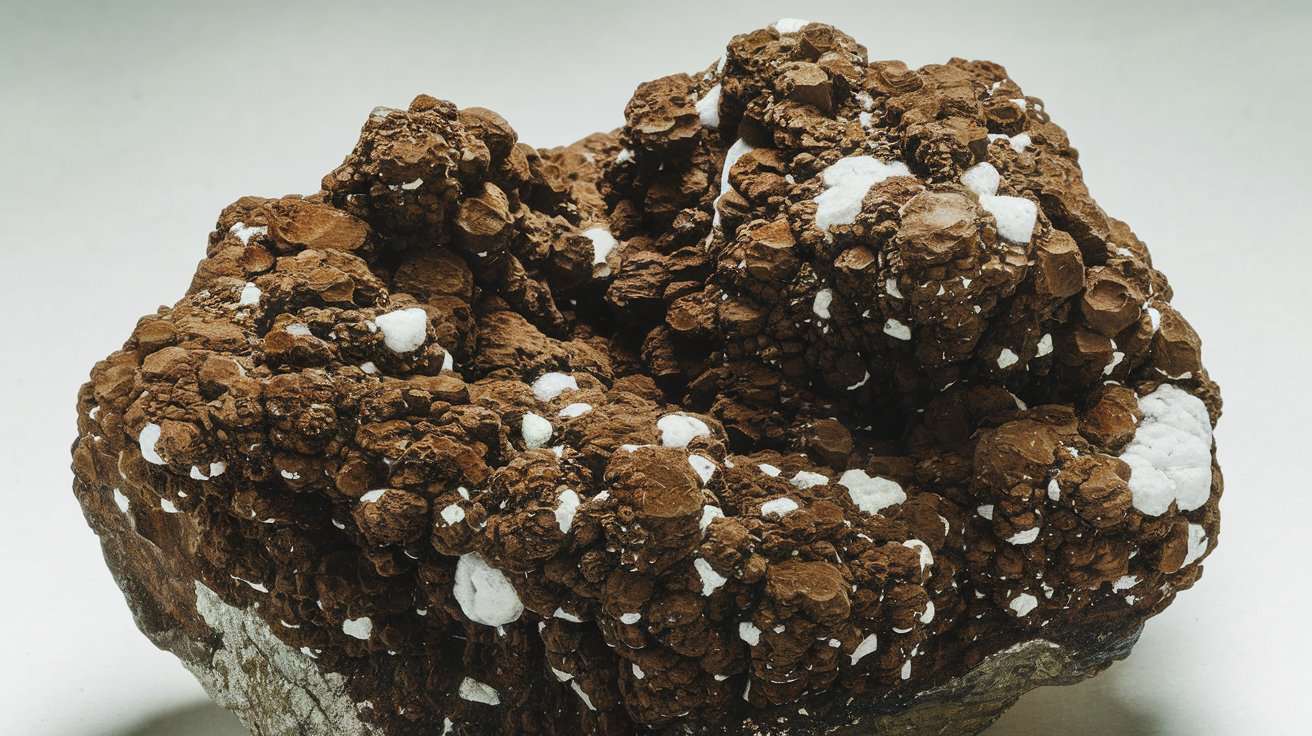
Artroeite might not be a household name, but this rare mineral has a fascinating story. Found in only a few locations worldwide, it boasts a unique chemical composition and striking appearance. Artroeite is a lead aluminum phosphate hydroxide mineral, often recognized by its vibrant blue or green crystals. Discovered in the Tsumeb Mine in Namibia, it has since intrigued geologists and collectors alike. Its rarity and beauty make it a prized specimen in mineral collections. Whether you're a seasoned geologist or just curious about the natural world, these 30 facts about Artroeite will surely pique your interest and deepen your appreciation for this extraordinary mineral.
Key Takeaways:
- Artroeite is a rare mineral with unique properties, named after American mineralogist Arthur Roe. It's sought after by collectors and valuable for scientific research, despite its toxicity.
- Found in limited locations, Artroeite is associated with lead-copper deposits and has uses in education and geological studies. Its small size and rarity make it a fascinating subject for both collectors and researchers.
What is Artroeite?
Artroeite is a rare mineral that has fascinated geologists and collectors alike. Its unique properties and limited availability make it a subject of interest. Here are some intriguing facts about this mineral.
-
Artroeite is a rare mineral composed of lead, copper, and arsenate. Its chemical formula is PbAl₆(AsO₄)₂(OH)₁₆·4H₂O.
-
This mineral was first discovered in 1982 in the Tsumeb Mine, Namibia, a site known for its diverse and unique mineral specimens.
-
Artroeite typically forms in oxidized zones of lead-copper deposits, where it crystallizes in the triclinic system.
-
The mineral is named after Arthur Roe, an American mineralogist who made significant contributions to the field.
-
Artroeite crystals are usually small, often less than 1 millimeter in size, making them challenging to study and collect.
Physical Properties of Artroeite
Understanding the physical properties of Artroeite can help in identifying and appreciating this rare mineral. Here are some key characteristics.
-
Artroeite has a white to pale blue color, which can sometimes appear translucent.
-
The mineral has a vitreous to pearly luster, giving it a shiny appearance when light reflects off its surface.
-
It has a Mohs hardness of 2.5 to 3, making it relatively soft compared to other minerals.
-
Artroeite exhibits perfect cleavage in one direction, meaning it can easily split along a specific plane.
-
The specific gravity of Artroeite ranges from 2.8 to 3.0, indicating it is denser than many common minerals.
Chemical Composition and Structure
The chemical makeup and structure of Artroeite contribute to its unique properties. Let's delve into some fascinating details.
-
Artroeite's chemical formula, PbAl₆(AsO₄)₂(OH)₁₆·4H₂O, reveals that it contains lead, aluminum, arsenate, hydroxide, and water molecules.
-
The mineral's structure is characterized by layers of aluminum hydroxide, with lead and arsenate ions interspersed between them.
-
Artroeite is part of the alunite group of minerals, which share similar structural features and chemical compositions.
-
The presence of arsenate in Artroeite makes it toxic, requiring careful handling and storage.
-
Despite its toxicity, Artroeite is not radioactive, making it safer to handle than some other arsenate minerals.
Occurrence and Localities
Artroeite's rarity means it is found in only a few locations worldwide. Here are some notable occurrences.
-
The Tsumeb Mine in Namibia is the most famous locality for Artroeite, producing some of the finest specimens.
-
Artroeite has also been found in the Gold Hill Mine, Utah, USA, although specimens from this location are less common.
-
Other localities include the Ojuela Mine in Mexico and the Lavrion District in Greece, both known for their diverse mineral assemblages.
-
The mineral is typically found in association with other lead and copper minerals, such as cerussite, malachite, and azurite.
-
Artroeite often occurs as a secondary mineral, forming through the alteration of primary lead-copper minerals in oxidized zones.
Uses and Significance
While Artroeite is not widely used in industry, it holds significant value for collectors and researchers. Here are some reasons why.
-
Artroeite specimens are highly sought after by mineral collectors due to their rarity and unique appearance.
-
The mineral's distinctive properties make it an interesting subject for scientific research, particularly in the fields of mineralogy and crystallography.
-
Artroeite can serve as an indicator mineral, helping geologists identify and study lead-copper deposits.
-
Despite its toxicity, Artroeite is sometimes used in educational settings to teach students about mineral properties and identification.
-
The mineral's association with other valuable minerals can provide insights into the geological processes that form lead-copper deposits.
Interesting Tidbits
Here are some additional fun facts about Artroeite that you might find intriguing.
-
Artroeite is often mistaken for other white or pale blue minerals, such as hemimorphite or smithsonite, due to its similar appearance.
-
The mineral's name, Artroeite, is pronounced "ar-tro-ite," with the emphasis on the first syllable.
-
Artroeite's small crystal size makes it challenging to photograph, requiring specialized equipment and techniques.
-
Some of the best Artroeite specimens are housed in museums and private collections, where they are carefully preserved and displayed.
-
The discovery of Artroeite in the Tsumeb Mine added to the mine's reputation as one of the world's premier mineral localities, known for producing over 300 different mineral species.
The Final Brushstroke
Artroeite, a rare and captivating mineral, holds a wealth of fascinating details. From its unique crystal structure to its vibrant colors, this mineral has intrigued geologists and collectors alike. Its formation in hydrothermal veins and oxidized zones adds to its mystique, making it a sought-after specimen.
Understanding Artroeite's chemical composition and physical properties provides insight into its rarity and value. Its presence in specific geological environments highlights the intricate processes of nature. Collectors treasure Artroeite not just for its beauty but for the story it tells about Earth's history.
Whether you're a seasoned collector or a curious newcomer, Artroeite offers a glimpse into the wonders of geology. Keep exploring, and who knows? You might just uncover your own piece of this remarkable mineral. Happy hunting!
Frequently Asked Questions
Was this page helpful?
Our commitment to delivering trustworthy and engaging content is at the heart of what we do. Each fact on our site is contributed by real users like you, bringing a wealth of diverse insights and information. To ensure the highest standards of accuracy and reliability, our dedicated editors meticulously review each submission. This process guarantees that the facts we share are not only fascinating but also credible. Trust in our commitment to quality and authenticity as you explore and learn with us.


